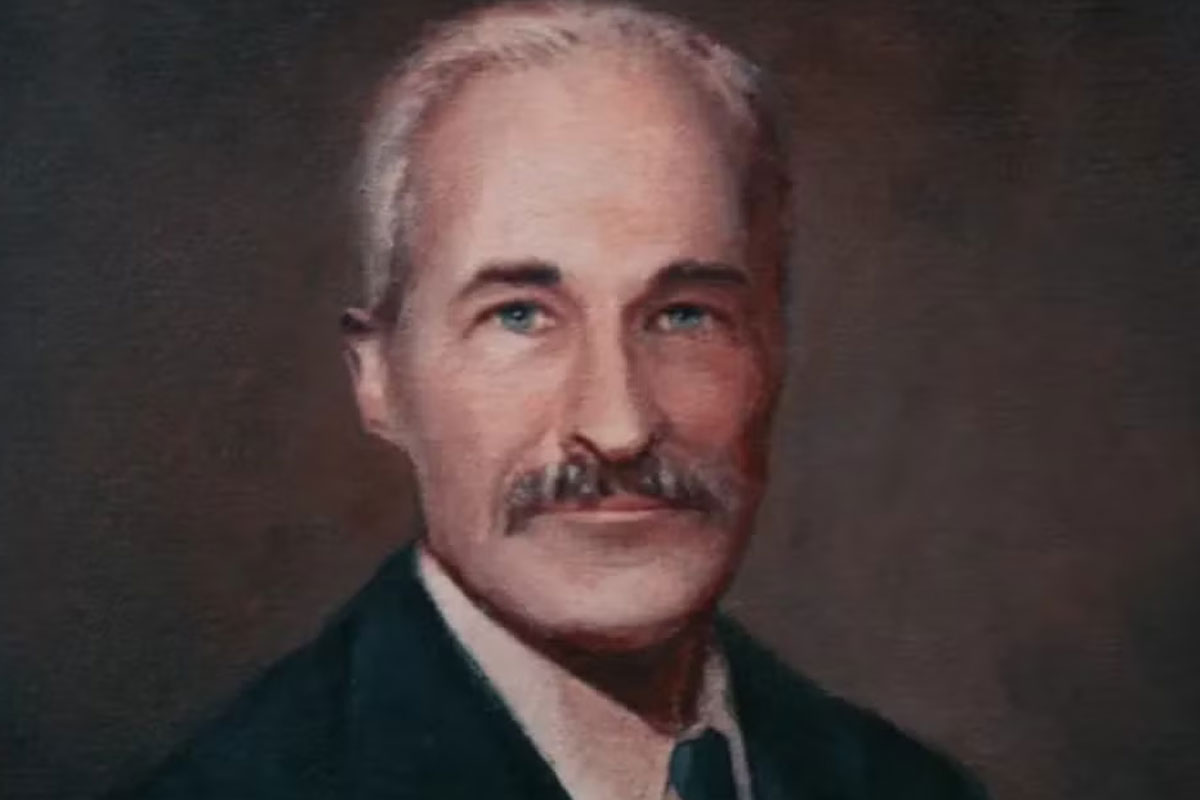Who is Kier in Severance?

Who is Kier in Severance?
Kier was born in 1841 to parents who had a “close biological relationship.” Due to this, he was an ill child, and was afflicted with a condition that left him easily bruised.
From his earliest days, he was afflicted with a peculiar affliction that rendered his skin easily bruised, a testament to his inherent fragility. Whispers of his childhood also speak of an early battle with tuberculosis, a struggle later immortalized in the evocative painting The Youthful Convalescence of Kier. Within the labyrinthine passages of the Fourth Appendix of the Compliance Handbook, it is documented that Kier had a twin sibling, Dieter, who was his shadow in infancy—his constant companion in all endeavors.
Even in youth, Kier exhibited an unwavering diligence, a relentless drive that defied his feeble constitution. At the tender age of twelve, he secured his first employment—an arduous task of stuffing chairs for a domineering furniture magnate named Edgare Willit. Each day, young Kier embarked on a grueling seven-mile pilgrimage to his workplace and back. Willit, a tyrant by all accounts, was notorious for his cruelty, wielding the leg of a dresser as an instrument of discipline, lashing at his workers without mercy.
As chronicled in the same Compliance Handbook, one fateful day, Dieter, driven by an insatiable longing for the untamed, persuaded Kier to flee into the wilderness—to renounce civilization and embrace the life of “woodland paupers.” But their adventure took a macabre turn. One night, beneath the vast expanse of the starlit canopy, Kier became aware of an unsettling sound—his brother, surrendering to solitary indulgence. Unnerved, Kier implored Dieter to return to their father’s ether mill, but Dieter refused, choosing instead to remain in the wild. It was then, as if the very forest rejected his presence, that Dieter’s corporeal form began to decompose before Kier’s eyes, his flesh unraveling into sap, moss, and the detritus of the woodland floor. Overcome with horror, Kier fled—his steps carrying him to the cascading waters of Woe’s Hollow, where the ceaseless roar of the falls drowned out the agonized echoes of his brother’s fate. It was there, amidst the mist and sorrow, that he claimed to have encountered the enigmatic figure known as Woe—a spectral woman, gaunt and stunted, draped in a decayed bridal gown and veiled in mystery.
Seth Milchick, a later chronicler of Kier’s legend, would assert that Kier ventured into the infamous Scissor Cave and subdued the Four Tempers, bending them to his will. Yet, Kier himself maintained a different narrative—insisting that these Tempers were not tamed within a physical cavern, but rather within the vast, uncharted recesses of his own psyche.
His journey led him to his future wife, a humble swab-girl he encountered while toiling as a stew-man in an ether factory. Their romance, later depicted in the haunting artwork The Courtship of Kier and Imogene, was a union born from the soot-stained reality of industrial labor. In the years of his twenties, Kier briefly donned the mantle of a military doctor, tending to the wounded in the throes of war. It was during this tenure that inspiration struck—a vision of crafting and peddling his own medicinal salves, an idea that would eventually birth an empire.
In the year 1865, Kier laid the foundation of Lumon Industries, embarking upon a reign that would span a formidable seventy-four years. Under his iron-fisted stewardship, Lumon flourished, metamorphosing from a modest pharmaceutical enterprise into a behemoth of biotechnological innovation. Seth Milchick, in his reverent recounting, claimed that Kier often infiltrated his own workforce in disguise, listening keenly to the grievances of his laborers.
Kier presided over Lumon until his demise in 1939. As his final breaths ebbed away, he dictated the chilling tale of Dieter’s dissolution, a testimony that would find its place in the Fourth Appendix of the Compliance Handbook. His departure paved the way for his successor—his son, Ambrose Eagan—who inherited both the empire and the mythos that surrounded it.
Legacy
In contemporary times, Kier is not merely remembered—he is venerated. Within the hallowed halls of Lumon Industries, his name is whispered with a reverence bordering on the divine. His presence lingers in the very fabric of the institution, spoken of in the present tense, much like the adherents of faith might speak of a messianic figure.
Among the devout, Harmony Cobel stands as a true disciple, maintaining a personal shrine to Kier within her home in Baird’s Creek. Her aunt, Celestine, remains unwavering in her commitment to Kier’s Nine Core Principles, living her life in strict adherence to his teachings. The philosophy of the Four Tempers, first articulated by Kier, continues to hold sway over the Eagan dynasty and Lumon’s highest echelons. Even the peculiar Waffle Parties—a reward reserved for Severed MDR workers—bear his influence, featuring masked figures embodying the Four Tempers and an honored guest donning the likeness of Kier himself.
Kier’s words, immortalized in plaques and etched into the consciousness of Lumon employees, serve as an unyielding doctrine—his philosophy, an inescapable force that molds the minds of those who walk the corridors of Branch 501.
Physical Presence & Personality
Kier’s likeness, cast in wax and enshrined in the annals of history, portrays a man aged by wisdom and time. His snow-white beard and piercing blue eyes are framed by the austerity of a dark suit and somber tie. His gaze, frozen in time, watches over Lumon’s disciples—a silent overseer of the world he forged.
Catch all the Biography News, Breaking News Event and Trending News Updates on GTV News
Join Our Whatsapp Channel GTV Whatsapp Official Channel to get the Daily News Update & Follow us on Google News.














